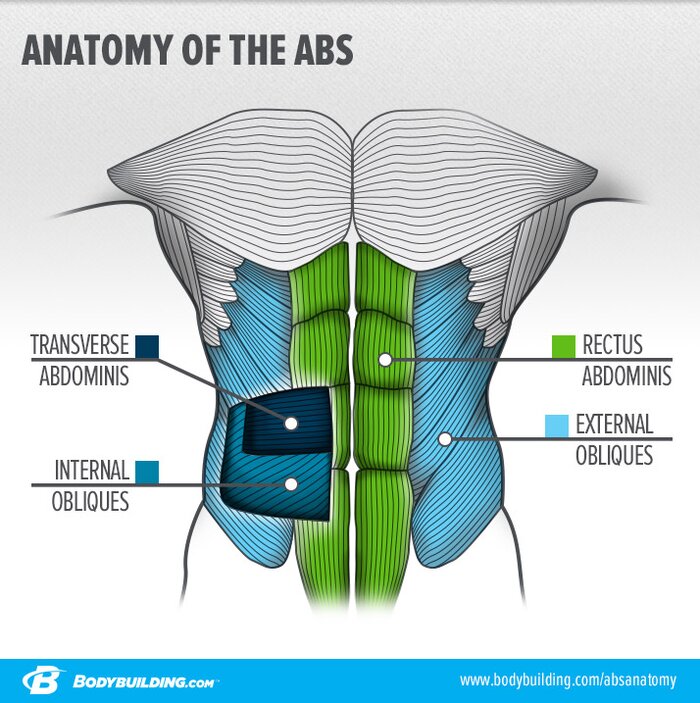
Anatomy of Growth How to Train Your Core Muscles
Your body's core is the term used for the group of muscles within your midsection that stabilize your spine and pelvis. Several muscles and groups of muscles make up the core of the body..

7 Best Beginner Core Exercises — Home Routine, Easy Ab Moves, and More
Core muscles in the abdomen include the long rectus abdominis muscles in the front; the external and internal obliques on the sides; and a wide, flat girdle in front called the transversus abdominis. In your back, a group of muscles called the erector spinae help you stand up tall.
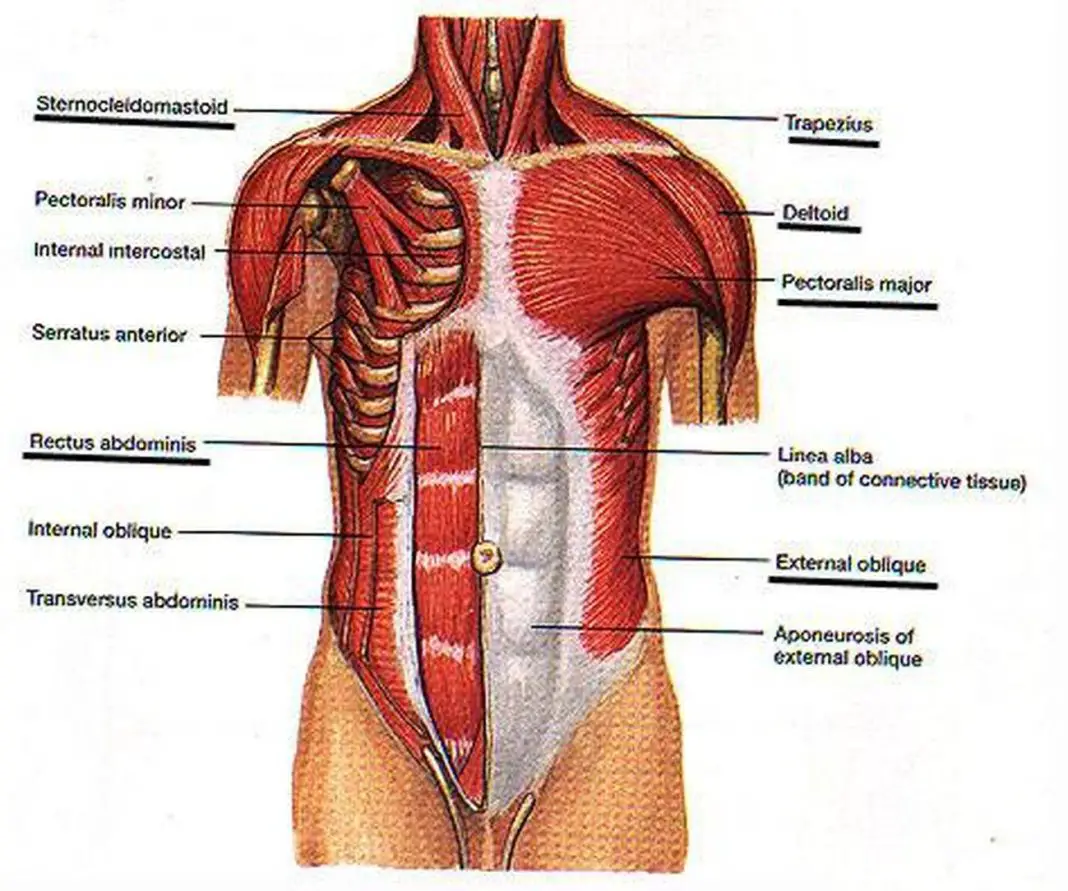
Pictures Of Abdominal Muscles
The rectus abdominis muscles are a pair of long, straight muscles that run down the middle of your abdomen, from your ribs to the front of your pelvis. This core muscle is responsible for trunk flexion, or the ability to bend forward or "curl up," according to the American Council on Exercise (ACE).

Anatomy Of Stomach Muscles
Back anatomy. The back is the body region between the neck and the gluteal regions. It comprises the vertebral column (spine) and two compartments of back muscles; extrinsic and intrinsic. The back functions are many, such as to house and protect the spinal cord, hold the body and head upright, and adjust the movements of the upper and lower limbs.
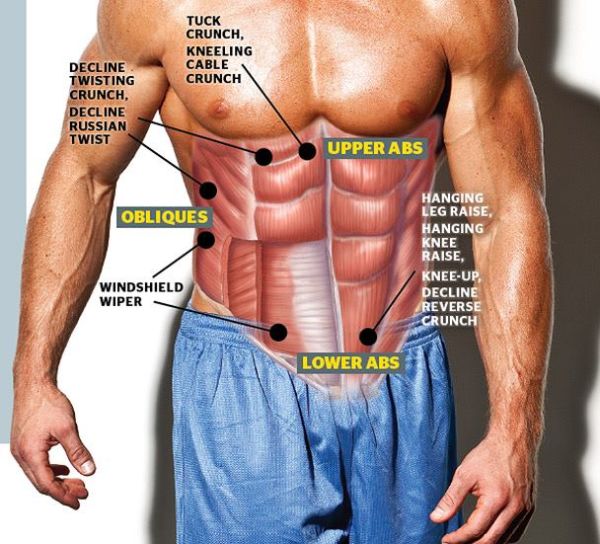
Meet Your Muscles Abdominal Muscles Anatomy • Bodybuilding Wizard
The core is the center of gravity and where all movement begins. It is also the center of stability for the lower limb, from the foot to the hip. In order for muscles to move bone other muscles need to hold on to bones creating a solid base. Therefore, the muscles in the core function as stabilizers and/or mobilize bone to allow movement.
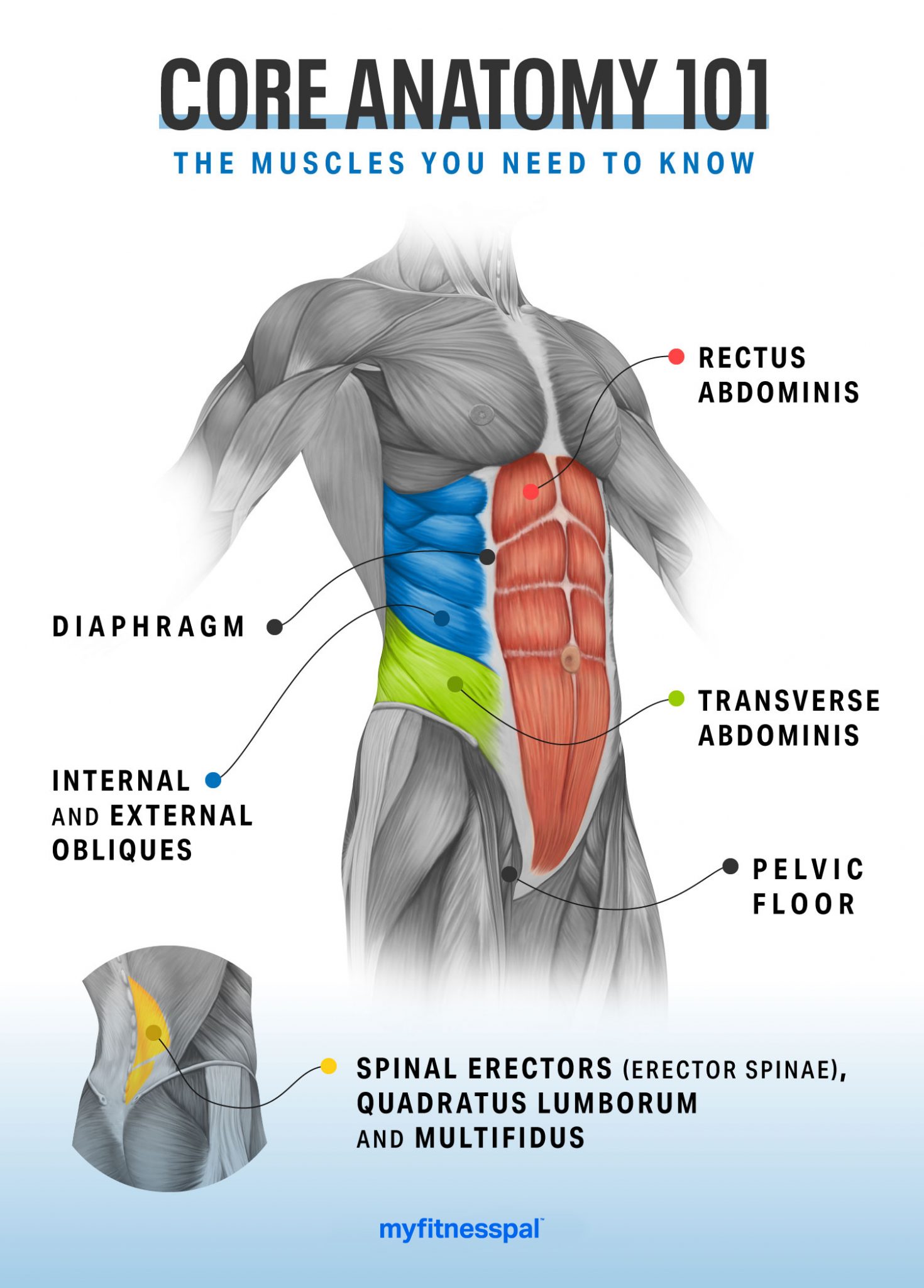
CoreStrengthening Exercises That Target Every Ab Muscle Fitness MyFitnessPal
Core Anatomy: Muscles of the Core by American Council on Exercise on October 11, 2013 Filter By Category As a fitness professional and an exam candidate, there is no way of getting around the fact that you need to know your anatomy! Understanding how the body moves and creates movement with the muscles is a huge part of the job.
/GettyImages-160935664-f80d8f5e0554435cb8cb2d68a339304f.jpg)
Abdominal Muscles Location and Function
This exercise will help you sculpt a six-pack, but also strengthen both the anterior (abs) and posterior (lower back) core muscles. Keep your core tight and your spine neutral during every rep. Don't let that lower back sway! 2. Dead Bug. This movement helps control and resist extension through your lower back.

5 Best Core Exercises for Beginners Evergreen Rehab and Wellness
The "core muscles," which are the muscles responsible for giving us strength and stability when bending or twisting, can essentially be broken down into seven different sets: the rectus abdominis, the external obliques, the internal obliques, the transversus abdominis, the multifidus, the quadratus lumborum and the lumbar erector spinae.

Abdominal Muscle Anatomy Male Abdominals & Core, Anatomy Explained The front wall consists
The major muscles of your core include your transverse abdominis, multifidus, internal and external obliques, erector spinae, diaphragm, pelvic floor muscles, and (of course) your abs, the rectus.

Everything You Need to Know for Stronger Abdominal Muscles Abdominal muscles, Abdominal
A Muscular Box Muscular Box The core can be described as a muscular box with the abdominals in the front, paraspinals and gluteals in the back, the diaphragm as the roof, and the pelvic floor and hip girdle musculature as the bottom.
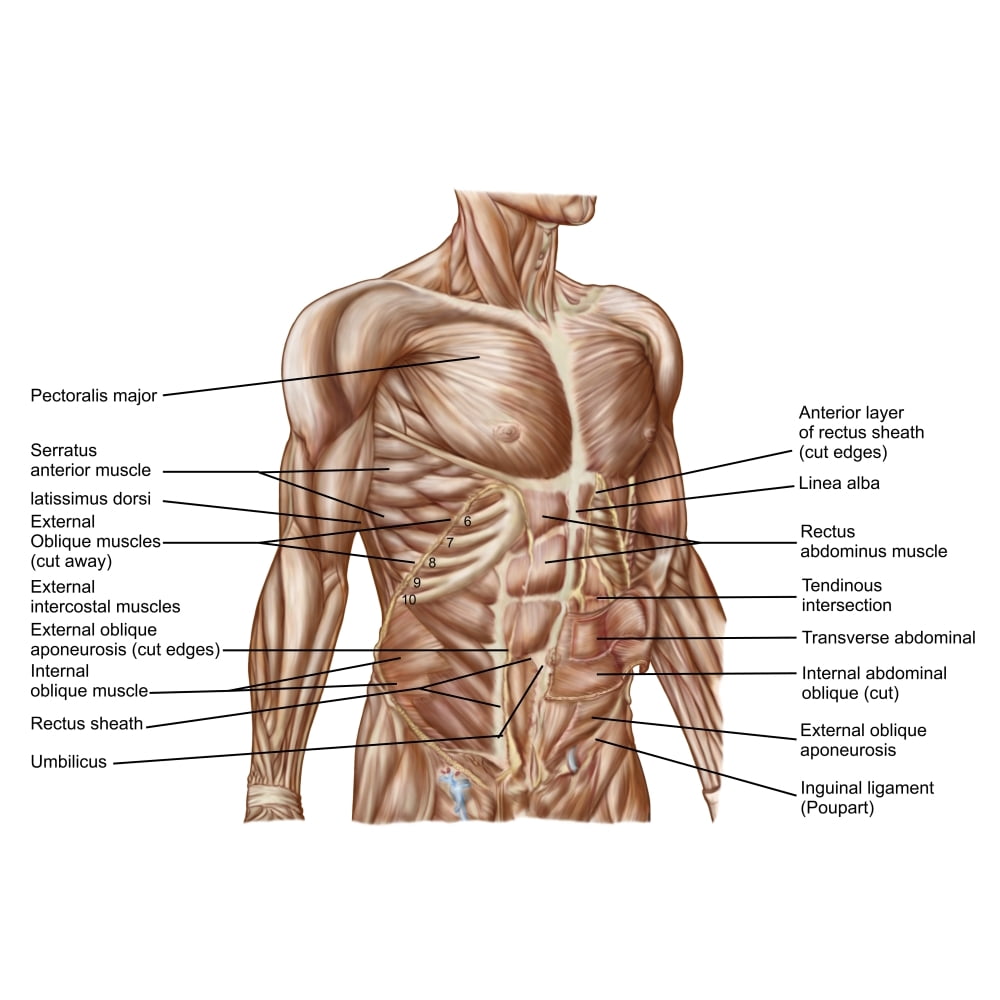
Anatomy of human abdominal muscles Poster Print (8 x 10)
The core muscles are involved in maintaining spinal and pelvic stability and can be divided into two groups, according to function. [1] The first group of muscles is the inner or deep core muscles. This group of muscles is also known as the local stabilising muscles. [1] Hodges et al (1996) [2] showed that the inner core acts in an anticipatory.
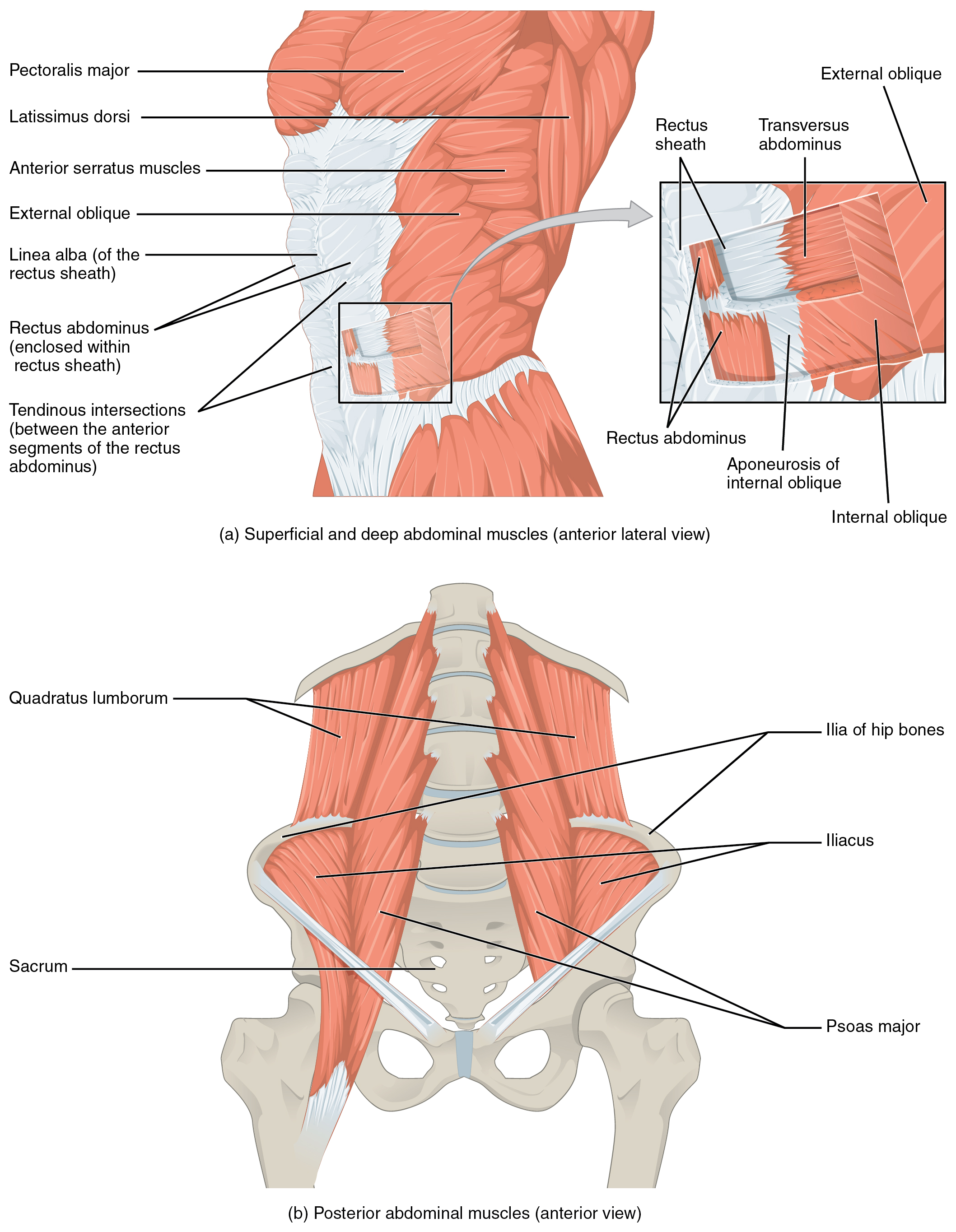
The top panel shows the lateral view of the superficial and deep abdominal muscles. The bottom
The system of muscles that make up the torso (on the front, the sides, and the back of the body). Muscles that stabilize the shoulders. [1] Image 1 and 2: Examples of core exercises: plank; abdominal drawing in maneuver (Figure 2). The importance of the core relate to its function ie sparing the spine from excessive load and transfer force from.

Male Muscle Figure Labeled Human Anatomy Muscle anatomy, Human anatomy and physiology
Fitness Do You Know What Your Core Really Is and What it Does? These movement screens will allow you to assess your core stability and conduct core strength tests. See if you know how to use and move your core. Written by Jeff Kuhland Last updated on Feb 22, 2023

The Functions of Core Muscles Deepstash
Muscles Major muscles included are the pelvic floor muscles, transversus abdominis, multifidus, internal and external obliques, rectus abdominis, erector spinae (sacrospinalis) especially the longissimus thoracis, and the diaphragm.

Torso Muscle Anatomy Torso 3B labeled HUMAN ANATOMY WEB SITE arquitecturafica
Diaphragm Multifidus Erector spinae Quadratus lumborum What are core muscles? Easily misunderstood, and often overlooked, your core muscles are an intricate and constantly interacting.
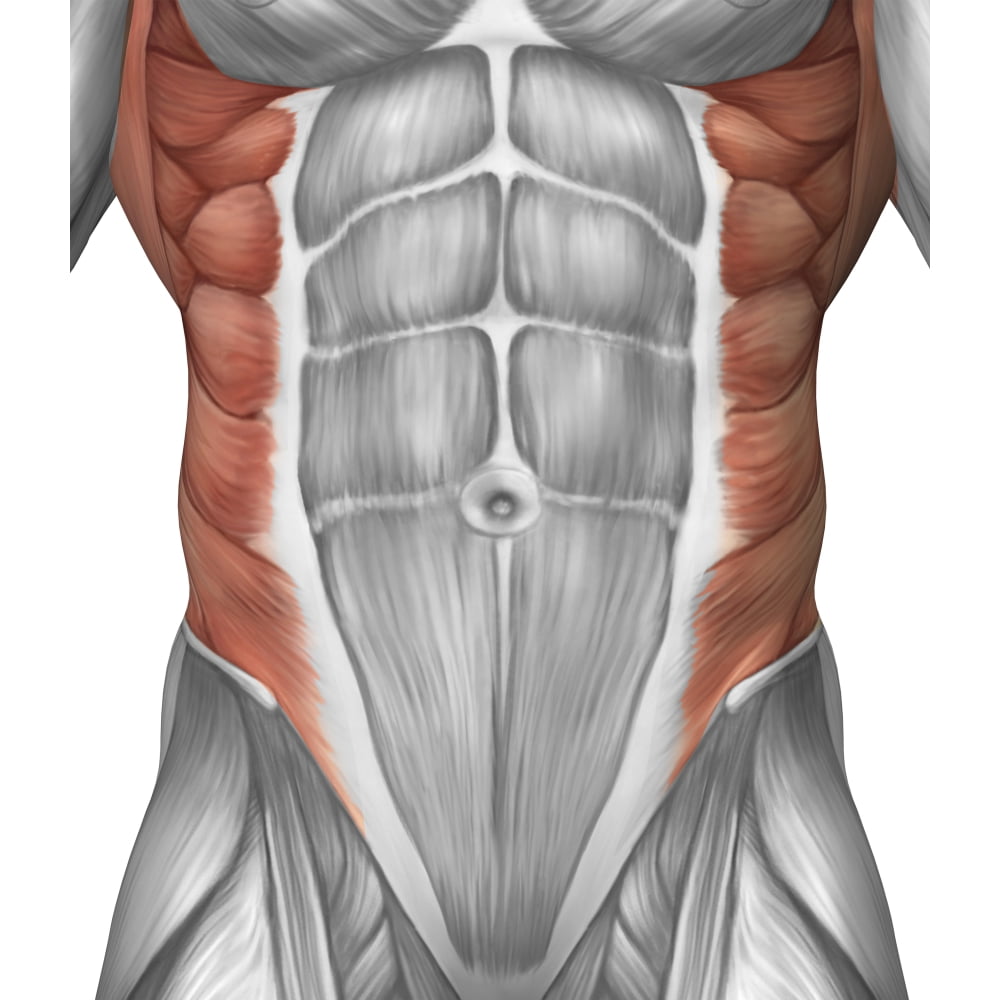
Male muscle anatomy of the abdominal wall Poster Print (26 x 30)
uddiyana Categories: Anatomy | Torso | Yoga It seems appropriate to take a swipe at the core since the last two muscle of the month articles were the iliacus followed by the psoas muscle. They equal the ever-popular iliopsoas muscle and are perhaps the epitome of what we call the core muscles.